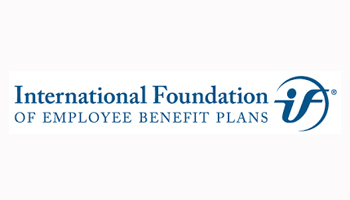 For those employees fortunate enough to receive health insurance from work, there’s a bountiful array of health care services that are still covered by plans. The International Foundation of Employee Benefit Plans (IFEBP) polled its membership in late 2007 and found that employers are not only continuing to cover a broad range of services, but also new services the likes of which weren’t covered even two years ago…from medical tourism to biofeedback.
For those employees fortunate enough to receive health insurance from work, there’s a bountiful array of health care services that are still covered by plans. The International Foundation of Employee Benefit Plans (IFEBP) polled its membership in late 2007 and found that employers are not only continuing to cover a broad range of services, but also new services the likes of which weren’t covered even two years ago…from medical tourism to biofeedback.
These results are documented in IFEBP’s publication, Health Care Benefits: Eligibility, Coverage and Exclusions.
The usual suspects are covered by well over 97% of employers, such as ER visits, inpatient hospitalization, surgical inpatient and outpatient procedures, outpatient physician visits, imaging and lab, intensive care, and urgent care. What’s fascinating to see is that 11% of employers are now covering medical tourism — a totally new category for covered services. Furthermore, 17% are covering “health care kiosks,” representing the new imperative for communicating with patients using new-and-improved technology.
Digging deeper, diagnostic tests covered by virtually all employers include mammograms, pap tests, MRI, colorectal screenings, and the growing-in-popularity prostate-specific antigen (PSA) test, which 92% of employers now cover. PET is growing in coverage, with 69% of employers covering that high-price exam, and 44% cover body scans — an imaging technique that has received criticism in many circles for over-use. Biometric testing is now covered by 38% of employers, too.
Finally, there has been substantial growth in the area of complementary and alternative therapies covered. IFEBP found that, since 1999, big increases have been seen in many therapeutic areas such as acupuncture (covered by 34% of employers), massage (covered by 13%), nutrition therapy (13%), and biofeedback (9%).
But wait…there’s still more! Most employers cover, to some extent, mental health, physical therapy, annual physicals, prenatal care, well baby care, durable medical equipment, chemical dependency treatment, prostheses, birth control, organ transplants, vasectomies, vaccines, and many other areas.
So much for inclusions; what’s excluded? Most employers exclude cosmetic surgeries, although about 28% cover some aspects of plastic surgery. Experimental procedures are covered by 30% of employers. Some other interesting newer examples of “not covered” items include “lifestyle drugs” (read: Viagra, Levitra, Cialis) which 27% of employers cover; human growth hormone, covered by 31%; and genetic testing, covered by 16%.
Emerging areas covered by a few employers include telephonic consults with physicians (covered by 14% of employers), health coaching (covered by 13%), and clinical trials and experimental medicine (6%). Intriguingly, 14% of employers cover off-label use of Rx drugs.
Some 400 companies are represented in this survey from IFEBP’s membership. In this group of employers, 56% are corporations, 20% professional service firms, 15% public employers, and 9% from multi-employer plans. This sample isn’t necessarily representative of the larger American employer pool. Smaller companies do not offer this rich complement of benefits, a point to keep in mind when reviewing these data.
Health Populi’s Hot Points: While many of us bloggers tend to focus on the dark side of health insurance — what’s not covered, denials, lack of access — it’s important to recognize that most employers who cover employees for health care are doing their best to still cover employees and meet their ever-growing demands for the new-new thing in health. Witness the data described for new imaging technologies such as PET, growing coverage of complementary therapies, and even more than 1 in 10 firms covering health coaching. The cost of covering health insurance outstrips profits per employee for many sectors in the U.S. economy. The health benefit is by far the most treasured perk per employee, and also the most at-risk. Employees who do receive this rich benefit package — even with higher copays and coinsurance percentages — should feel fortunate to have this perk. The caveat on all of this is, at the moment of truth — when an employee gets sick — will the insurance plan that looks so rich be ‘there’ to support the insured person? This is the wild card question that concerns even those lucky enough to have health insurance.




 I'm in amazing company here with other #digitalhealth innovators, thinkers and doers. Thank you to Cristian Cortez Fernandez and Zallud for this recognition; I'm grateful.
I'm in amazing company here with other #digitalhealth innovators, thinkers and doers. Thank you to Cristian Cortez Fernandez and Zallud for this recognition; I'm grateful. Jane was named as a member of the AHIP 2024 Advisory Board, joining some valued colleagues to prepare for the challenges and opportunities facing health plans, systems, and other industry stakeholders.
Jane was named as a member of the AHIP 2024 Advisory Board, joining some valued colleagues to prepare for the challenges and opportunities facing health plans, systems, and other industry stakeholders.  Join Jane at AHIP's annual meeting in Las Vegas: I'll be speaking, moderating a panel, and providing thought leadership on health consumers and bolstering equity, empowerment, and self-care.
Join Jane at AHIP's annual meeting in Las Vegas: I'll be speaking, moderating a panel, and providing thought leadership on health consumers and bolstering equity, empowerment, and self-care.